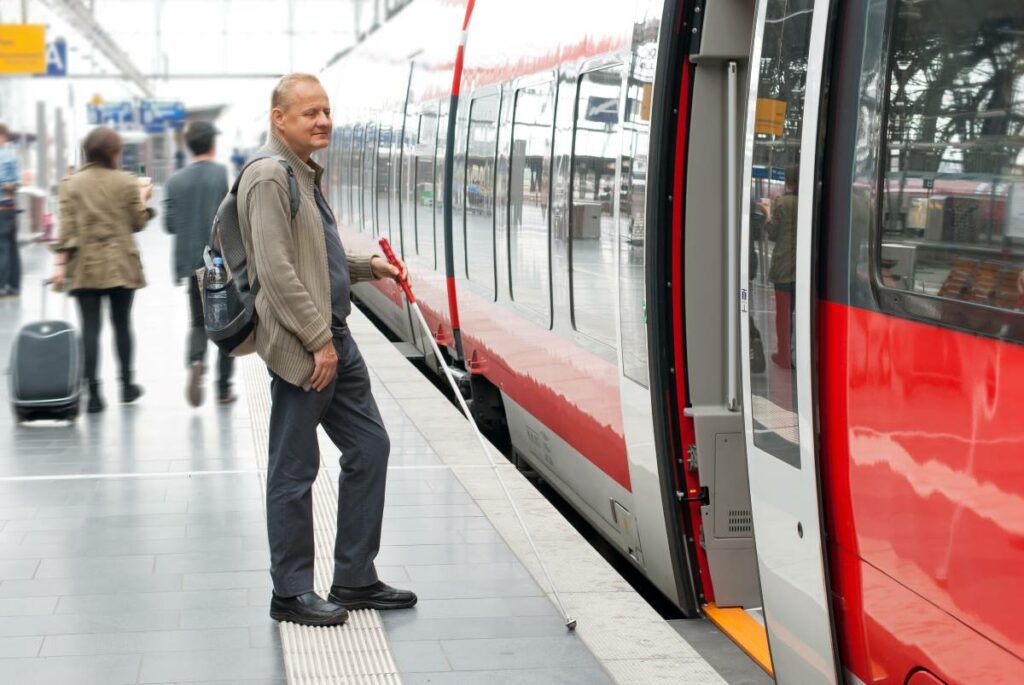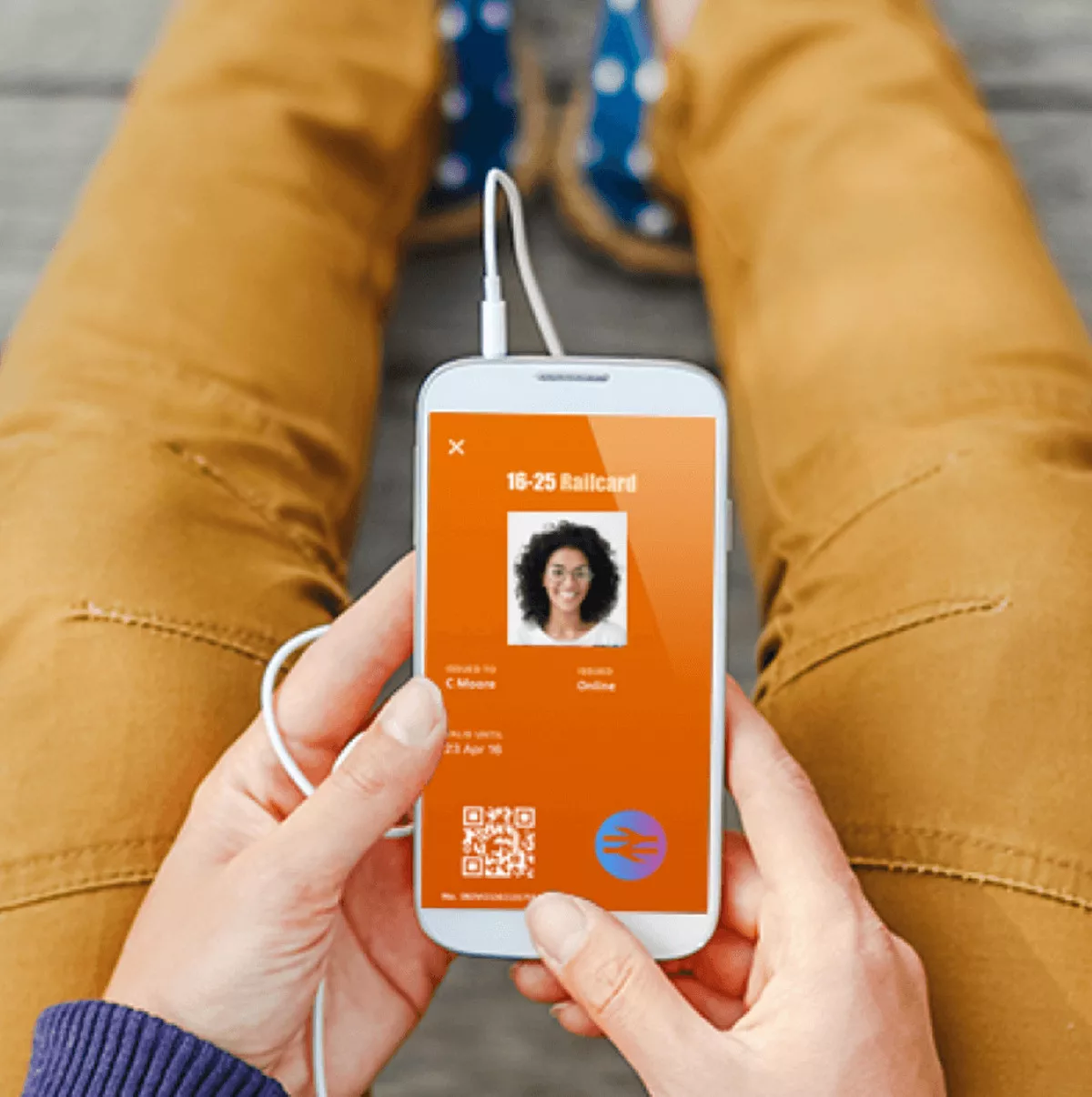Travelling by train in the UK can often come with a hefty price tag, especially for longer distances. However, despite its cost, train travel remains a popular choice for many in the UK, as some groups of individuals are entitled to several concessions and discounts. One such group is disabled individuals, who can obtain a Disabled Persons Railcard to enjoy discounted train fares all year round.
In this article, we’ll explore the benefits of the Disabled Persons Railcard, outline the eligibility criteria, and guide you through the application process. Keep reading to find out how you can enjoy affordable and accessible train journeys.

What Is the Disabled Person’s Railcard?
A Disabled Persons Railcard is a special card that offers discounted fares on train travel for individuals with disabilities. Designed to make train journeys more affordable, a disabled person’s railcard allows people with disabilities to pay one-third of the cost of the train fare to any destination in the country and any train operator. This includes both peak and off-peak travel, making it useful for both commuting and leisure trips.
Additionally, if another adult is travelling with you, they will also receive a one-third discount.
Who Qualifies?
To be eligible for a Disabled Persons Railcard, individuals must meet certain criteria, such as having a disability that makes travelling by train difficult or having a significant visual impairment. Only people with certain disabilities or progressive medical conditions qualify for the Disabled Persons Railcard.
To receive the disabled persons railcard, you must meet any of the following conditions:
- Suffer from a hearing impairment
- Suffer from visual impairment
- Have epilepsy
- Receive Adult Disability Payment (ADP) or Personal Independence Payment (PIP),
- Receive Pension Age Disability Payment (PADP), Attendance Allowance, or Severe Disablement Allowance
- Receive the Mobility Supplement of the War Pension,
- Receive Service or War Disablement Pension (for more than 79% disability)
- Lease or purchase a vehicle using the Motability scheme
- Receive the Child Disability Payment (CDP) or Disability Living Allowance (DLA) at:
- The middle or higher rate for the care section, or
- The lower or higher rate for the mobility part
You can also read, “How To Access Disabled Facilities Grants.”
What Proof Do You Need To Provide?
If you receive any of the above-mentioned benefits or suffer from any of the conditions listed before, you must supply the following proof:
Hearing impairment
You will need an official stamp from social services on the downloadable application form to indicate you are registered as a deaf person. The link for the downloadable PDF application form is here. For those people who use a hearing aid, a copy of the prescription or a photocopy of the front cover of the NHS battery book is sufficient.
Visual impairment
You will need an official stamp from the social services on the above-mentioned downloadable form. You must indicate you are registered as blind. Alternatively, a person can provide a copy of their BD8 Certificate, Certificate of Visual Impairment (CVI), or BP1 Certificate (Scotland).
Epilepsy
An epilepsy medication exemption certificate and a photocopy of the prescription for drugs are required. For those over 60, a photocopy of the drug prescription will suffice. Alternatively, a person can provide a copy of the epilepsy medication exemption certificate and a letter from the DVLA informing them that they cannot drive.
Lease or purchase a vehicle using the Motability scheme
You need to provide a photocopy of the hire purchase or the leasing agreement from the previous 12 months.
Adult Disability Payment or Personal Independence Payment
An award letter from the previous 12 months needs to be provided. For all other cases, a photocopy of the award letter is required.
How To Apply for a Disabled Persons Railcard
You can make an application to buy a disabled person’s railcard by clicking on the “Buy” button on the Disabled Persons Railcard website. Anyone wishing to renew the disabled person’s railcard can also do so through the link.
You will need to provide a digital-style passport photo (if you want the railcard in a digital format), the appropriate documents to prove eligibility and a credit or debit card to make the payment.
Disabled Persons Railcard in London
London stands as the largest city in the country, drawing in a significant number of individuals from various regions. As a result, both disabled visitors and residents in London rely on the Disabled Persons Railcard for their travel needs.
For those travelling to London from outside the city’s zones 1 to 9 on the national rail, the disabled railcard can be used at any time, provided that the fare exceeds £19.60. Individuals living and commuting within the city can freely use the railcard on the comprehensive rail system. However, it’s important to note that for journeys on the London Underground or the Docklands Light Railways, a disabled person’s railcard must be linked to an Oyster Card.
The one-third discount is only valid at off-peak hours, after 9.30 am Monday to Friday, and all day on the weekends.
Disabled Persons Railcard on the Eurostar
Eurostar provides rail transport between London and European cities, such as Paris and Brussels. As no domestic services are available on Eurostar, it does not accept the disabled persons railcard. Eurostar does, however, offer various discounts for those who need wheelchair access or have any special needs.
Validity, Cost, and Processing Time
The card is valid for a year and can be used for multiple trips during that period. Its cost is £20. You can also purchase a 3-Year Disabled Persons Railcard to increase your savings for only £54.
It will take 5 working days for the review and approval to be given. Following the approval, those who applied for the digital version can use the railcard immediately. People who choose the physical version will receive their railcard through the post within 5 working days (in addition to the 5 working days for approval and verification).
Making Train Travel Cost Effective
The Disabled Persons Railcard is a valuable resource, offering a significant one-third discount on train fares for disabled individuals. It promotes accessibility and inclusivity in train travel, benefiting those with mobility hindrances, such as visual or hearing impairment.
By reducing financial barriers, the railcard enables greater independence and opportunities for work, education, and leisure. Overall, it demonstrates a commitment to an inclusive transport system and recognizes the unique needs of disabled individuals.





